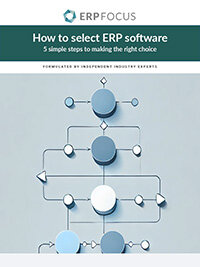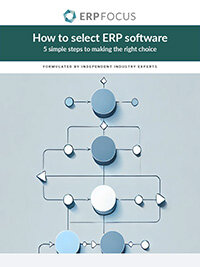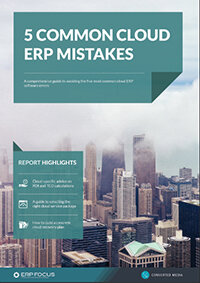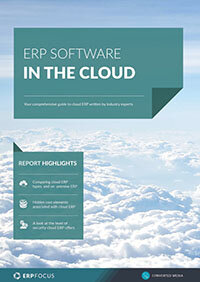How to gain value out of IoT initiatives
Too often times the Internet of Things (IoT) is over-simplified by describing it as the expanded access to smart devices or assets. The implementation of affordable sensors and connectivity technology is only a portion of the effort required on a successful IoT application.
The connection of the actual devices can be equated to putting wireless headsets with microphones on every seagull at the beach. This could result in the comprehensive collection of every noise and utterance of each seagull. Now what? The recorded stream of squawking unto itself is just noise. How will IoT support the collection of this data in such a way to deliver the intended benefits?
Avoid cloud ERP mistakes with our helpful guide

There is set IoT functional steps or layers required to convert the noise into benefits.
Sensing – The cost of an electro-mechanical conversion of a value or status into data has been dramatically reduced. This technology feels invisible and we can imagine a low cost microphone and motion sensor applied to the head of each seagull.
Communications – The backbone of IoT is a secure and robust network connecting the “things.” Historically industrial LAN’s have been built with high walls and rigid security designed to prohibit the very ad hoc approaches that are the basis of IoT. Communication standards are still evolving but a bluetooth connection might make sense for seagulls but clearly does not feel robust enough for critical industrial assets.
Data Collection – Beyond just communication is the development of a data collection strategy. Is the data collection voice activated by a seagull squawk or do I just listen in every five minutes? In traditional industrial scenarios there may be polling cycles, intermittent pulls of data, expectation that the asset will report asynchronously with conditions of interest, and other permutations that define what and when data is passed from asset to other assets or systems. Most views on IoT include bypassing the traditional hierarchical data layers and allowing applications to access IoT-ready assets directly.
Data Management – How much of this data am I going to maintain? Perhaps my seagull headset has the ability to retain the last five minutes of data. The aggregation of audio, movement and other sensor-based data may only pass to a centralized system based on periodic connections. Data management decisions include the determination of how much data of the data will be stored in its rawest form versus the need to aggregate data at various logical levels.
Data Analytics – An abundance of data now begs for an answer to the question, “what does it all mean?” In many cases, traditional metrics and tools will get a boost from the raw data set explosions. Ultimately the data may find its way into AI / Machine Learning analytics that drive even deeper understanding.
Rule-Based Actions – Ultimately, IoT is not a monitoring for the sake of monitory activity. How is the enriched understanding converted into value? Can I find a way to alter conditions that benefit both the seagulls and their environment? When and what should I whisper into the headsets of this flock or individual seagulls?
Finally IoT discussions are never complete without some mention of security. The flow of data back and forth to this explosion of things provides opportunity for unwanted access and possibly malicious intent.
There is no singular approach to addressing these layers or functions. These layers will evolve, overlap and interact differently in nearly every IoT solution. There are various vendors of software and hardware solutions that can provide the individual layers or combinations thereof. Manufacturers will be or are already making these challenging choices and finding ways to drive value out from IoT initiatives.
Free white paper

How to Select ERP
Learn to select your ERP in 5 easy steps by following our expert's advice

Featured white papers
-

Five common cloud ERP mistakes
Get your comprehensive guide to avoiding the five most common cloud ERP errors
Download -

Related articles
-

Why you shouldn't underestimate cloud ERP consultant costs
Make sure to take the cost of a consultant into account when planning your cloud ERP budget
-

Secret KPI: Why Your ERP Implementation Team Matters More Than Software
Learn how Godlan ensures successful ERP implementation for manufacturers with proven strategies &...
-

Cloud ERP vs on-premise ERP: an objective comparison
Are you choosing between cloud ERP and on-premise ERP? This balanced guide will help

